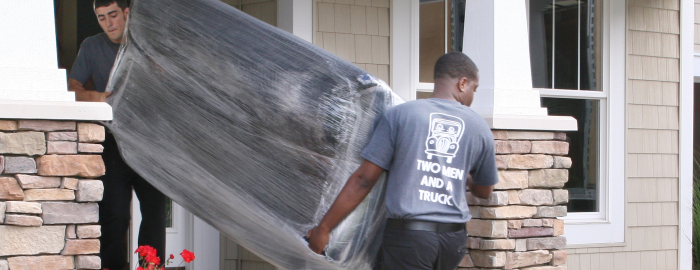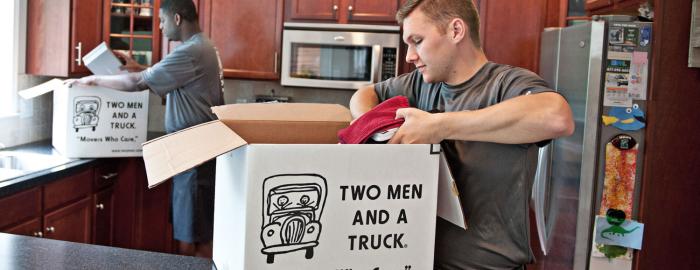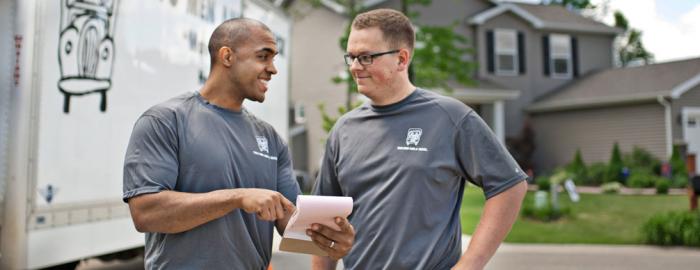
Moving your treadmill can sometimes feel overwhelming, as its size and weight may make it seem immovable. But do not worry because, at TWO MEN AND A TRUCK®, we handle bulky exercise equipment with the same care and expertise as any precious belongings. We understand the importance of keeping your wellness routine on track, and that all starts with getting your treadmill to its new home in tip-top shape.
While our professional movers are always happy to lend a hand (or, should we say, two!), we know there are times when DIY might be your game plan. That's where this guide comes in. We'll walk you through moving your treadmill from prep work to final placement, ensuring your journey is as smooth and seamless as your daily run. So, whether you're relocating or rearranging your home gym, this step-by-step approach will have you up and running in no time.
Equipment Needed
- Gloves - During the move, it's important to wear gloves to protect your hands from potential scratches or scrapes. They also help you maintain a secure grip on heavy or awkward objects, ensuring a safer and more comfortable moving experience.
- Moving Dolly - You must get a moving dolly if your treadmill does not have built-in wheels. A moving dolly is a wheeled platform designed to transport heavy items, providing stability and ease of movement. Using a moving dolly helps distribute the treadmill's weight and reduces strain on your body during relocation.
- Protective padding or moving blankets - By wrapping the treadmill in blankets or padding, you create a protective barrier that absorbs impact and reduces the risk of potential scratches, dents, or other damage during the move.
- Packing tape or straps - Packing tape or straps are needed to secure the transport of loose parts or accessories accompanying the treadmill. By carefully wrapping and fastening these items to the main body of the treadmill, you prevent them from shifting or becoming lost during the move.
Moving a Treadmill
Follow this step-by-step guide closely to ensure a sweat-free relocation of your treadmill.
1. Assess Your Treadmill
Before you begin, it's important to assess your treadmill’s weight, dimensions, and unique features. Check whether it has wheels or the ability to fold for easier transportation. Additionally, take note of any narrow hallways or entryways in your home that may present challenges during the move. This initial assessment will help you plan and prepare effectively for a smoother and safer move.
2. Enlist the Help of Friends
When moving large, heavy items like a treadmill, it's always best to seek assistance. Ask your friends or neighbors for help to make the process easier and safer.
3. Unplug the Treadmill
Before moving the treadmill, ensure it is turned off and then unplug it from the power source. Remember, safety should always be the top priority during any moving process.
4. Secure Loose Parts
Secure any loose parts or accessories, such as the power cord, to the treadmill using packing tape or straps.
5. Clear Pathways
Make sure there are no obstacles on the path from where the treadmill is currently located to where it needs to be moved.
6. Move the Treadmill
If the treadmill doesn't have wheels, the first step is to lift it onto the moving dolly and secure it with tape or straps. Make sure to ask one of your enlisted friends for help. If it does have wheels, tilt it forward slightly and begin rolling it. Remember to use proper lifting techniques, such as bending your knees and not your back and lifting with your legs rather than your arms. This will help prevent any back pain once the move is complete.
7. Navigating Doorways and Stairs
Based on your earlier assessment, ensure that the treadmill can fit through all doorways and stairways along its route. Carefully maneuver the dolly or treadmill through doorways. If you need to go up or down stairs, we recommend hiring professional movers like the good folks at TWO MEN AND A TRUCK.
8. Load onto the Truck
Load the treadmill onto the truck by carefully lifting it onto the vehicle's bed or cargo area. For larger moving trucks, you may need to attach a loading ramp to the opening of the truck’s load bed and then carefully guide the dolly up the ramp and into the truck. Ensure the treadmill is positioned securely and balanced within the truck to prevent shifting during transit.
9. Unloading and Testing
Carefully unload the treadmill at its new location and position it according to your preferences. Reassemble any disassembled parts and test the treadmill to ensure it functions properly.


